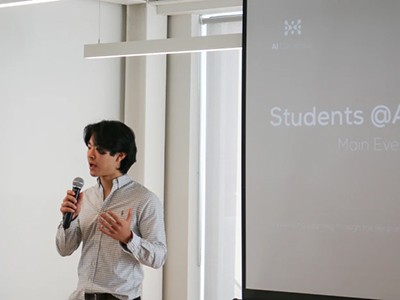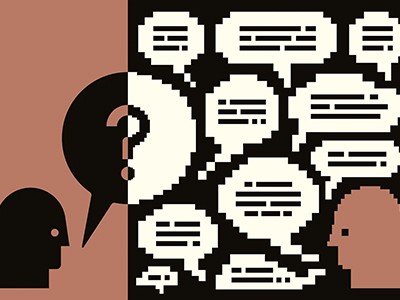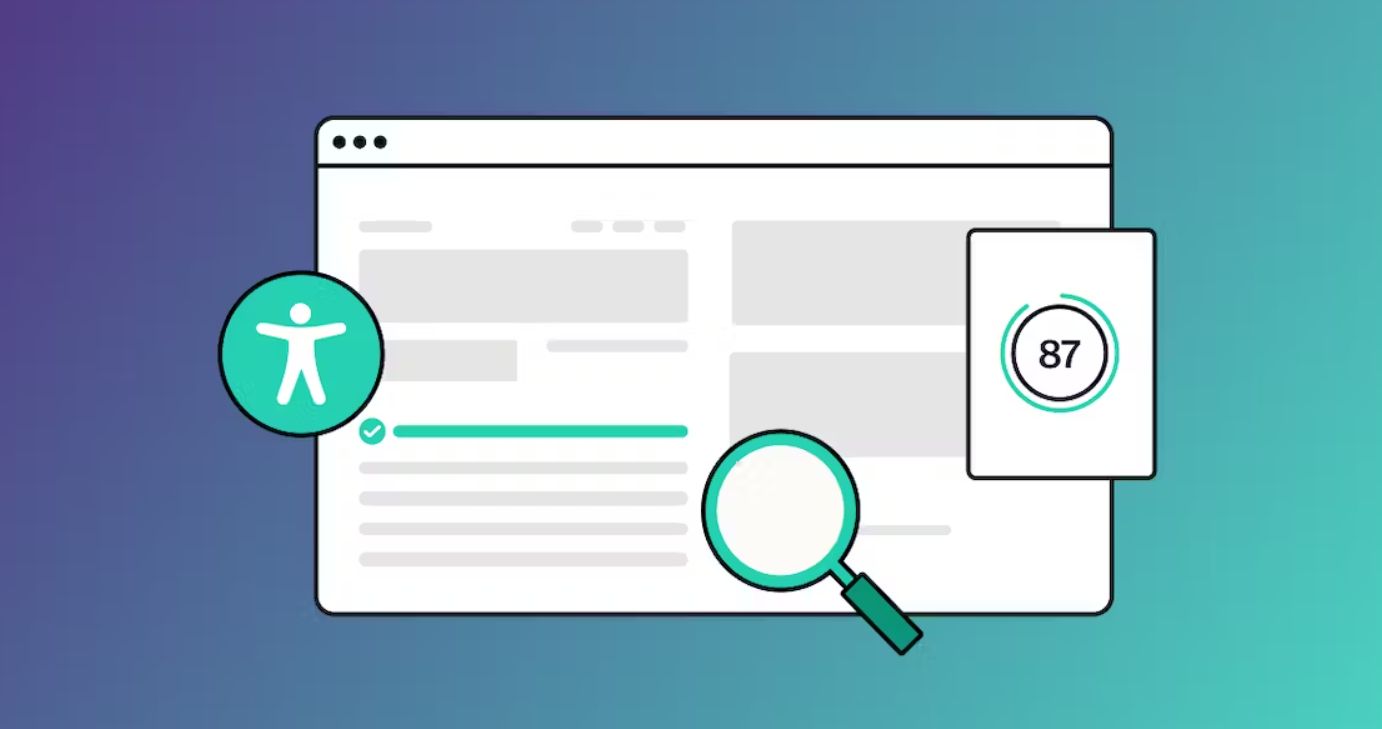[ad_1]
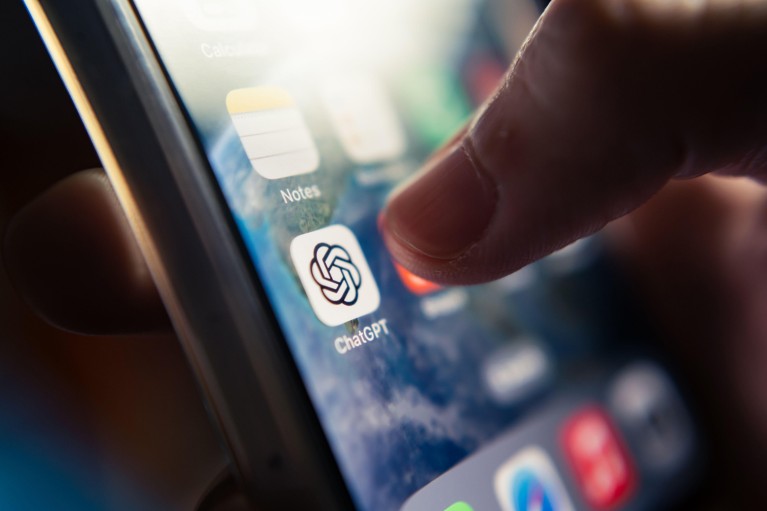
Tools such as ChatGPT can level the field for scientists who are English-language learners.Credit: Alamy
In 2015, Hana Kang experienced a traumatic injury that damaged the left hemisphere of her brain, disrupting her facility for language and ability to process abstract thoughts. She spent the next six years rebuilding her memory, recovering basic mathematics skills and relearning Korean, Japanese and English. In 2022, she returned to finish her bachelor’s degree in chemical biology at the University of California, Berkeley.
Today, Kang works as a junior specialist at the university’s Center for Genetically Encoded Materials. She uses mobility aids and an oxygen concentrator to manage her chronic pain — physical tools that are essential to her well-being. But no less meaningful are the generative artificial intelligence (GAI) programs she turns to each day to manage her time, interact with peers and conduct research. Kang struggles to read social cues and uses chatbots to play out hypothetical conversations. These tools also help her on days when fatigue clouds her thinking — by transcribing and summarizing recordings of lectures she attends, gauging tone and grammar, and polishing her code. “Without these tools, I’d be very lost, and I don’t think I could have done what I’ve managed to do,” she says.
Ready or not, AI is coming to science education — and students have opinions
Artificial intelligence (AI) tools — including chatbots such as ChatGPT, image generators such as Midjourney and DALL-E, and coding assistants such as Copilot — have arrived in force, injecting AI into everything from drafting the simplest grocery list to writing complex computer code. Academics remain divided over whether such tools can be used ethically, however, and in a rush to control them, some institutions have curtailed or completely banned the use of GAI. But for scientists who identify as disabled or neurodivergent, or for whom English is a second language, these tools can help to overcome professional hurdles that disproportionately affect marginalized members of the academic community.
“Everybody’s talking about how to regulate AI, and there’s a concern that the people deciding these guidelines aren’t thinking about under-represented individuals,” says Chrystal Starbird, a structural biologist at the University of North Carolina at Chapel Hill. She recently turned her attention to how GAI can support diversity, equity and inclusion. “We have to make sure we’re not acting from a place of fear, and that we’re considering how the whole community might use and benefit from these tools.”
Friend or foe?
Shortly after OpenAI in San Francisco, California, released ChatGPT in late 2022, primary and secondary schools around the United States started banning chatbots amid fears of plagiarism and cheating. Universities worldwide soon followed suit, including institutions in France, Australia, India, China, the United Kingdom and the United States. Ayesha Pusey, a mental-health and neurodivergence specialist at a UK disability-services organization, learnt that some of her students were facing disciplinary action for using GAI. Pusey, who identifies as autistic, dyslexic and otherwise neurodivergent, uses these programs herself and says that although they can be used to cheat, they’re also invaluable for structuring her life. “I’ve had a lot of success just budgeting my time, down to the recipes I cook for myself.”
Three ways ChatGPT helps me in my academic writing
Indeed, using chatbots as a kind of digital assistant has been game-changing for many scientists with chronic illnesses or disabilities or who identify as neurodivergent. Collectively, members of these groups have long shared experiences of being ignored (see Nature Rev. Chem. 7, 815–816; 2023) by an academic system that prioritizes efficiency — stories that are now backed by data (see go.nature.com/3vuch31) .
For those who struggle with racing thoughts, it can be challenging to settle the mind when working. Tigist Tamir, a postdoctoral researcher at the Massachusetts Institute of Technology in Cambridge, has attention-deficit hyperactivity disorder, and uses chatbots — including a program called GoblinTools, developed for people who are neurodivergent — to turn that inner chatter into actionable tasks and cohesive narratives. “Whether I’m reading, writing or just making to-do lists, it’s very difficult for me to figure out what I want to say. One thing that helps is to just do a brain dump and use AI to create a boiled-down version,” she says, adding: “I feel fortunate that I’m in this era where these tools exist.”
By contrast, people including Pusey and Kang are more likely to struggle when faced with a blank page, and find chatbots useful for creating outlines for their writing tasks. Both say they sometimes feel that their writing is stilted or their narrative thread is muddled, and value the peace of mind that AI gives them by checking their work for tone and flow.

An AI-generated visualization of a woodland clearing described in the novel I Am Charlotte Simmons by Tom Wolfe.Credit: Kate Glazko generated using Midjourney
The usefulness of these tools extends beyond writing. Image generators such as OpenAI’s DALL-E allow Kate Glazko, a doctoral student in computer science at the University of Washington in Seattle, to navigate her aphantasia — the inability to visualize. When Glazko encounters a description in a book, she can enter the text into a program to create a representative image. (In February, OpenAI also announced Sora, which creates videos from text.) “Being able to read a book and see a visual output has made reading a transformative experience,” she says, adding that these programs also help people who cannot use a pencil or mouse to produce images. “It just creates a way to quickly participate in the design process.”
Levelling the field
Academia can also be a hostile place for scientists who are English-language learners. They often spend more time reading, writing and preparing English-language presentations than do those for whom English is their first language1, and they might be less inclined to attend or speak at conferences conducted in English. They are also less likely than fluent English speakers to be perceived as knowledgeable2 by colleagues, and journals are more likely to reject their papers (see Nature 620, 931; 2023).
Could AI help you to write your next paper?
Daishi Fujita, a chemist at Kyoto University in Japan, was educated in Japanese. Before GAI, Fujita says, “My colleagues and I would often say how we wished we could read papers in our mother tongue.” Now, they can use ChatPDF — a chatbot that answers users’ questions about the contents of a PDF file — alongside speech recognition and translation tools such as Whisper and DeepL to smooth the reading process. Particularly for literature searches or when researching unfamiliar topics, Fujita uses GAI programs to define words in unfamiliar fields and to quickly gauge whether a paper might be helpful, saving hours of work.
Generative AI can also be useful for structuring professional communications, allowing English-language learners to worry less over how their words might be perceived. María Mercedes Hincapié-Otero, a research assistant at the University of Helsinki who grew up speaking Spanish in Colombia, relies on GAI not just to structure and proof research papers, but also to draft e-mails and job applications. Passing her text through ChatGPT to check grammar and tone “helps make things a little more fair, as people like me often need to put more time and energy into producing writing at the required level”, Hincapié-Otero says. “I might ask someone to check, but if there’s no one available at the time, this becomes a great alternative.”
Similarly, Fujita has started using chatbots to help to structure and proofread his peer-review comments. Peer review is already more laborious for scientists who are English-language learners, Fujita says, but because of the small size of his field, there’s also the risk that he could be identified by his writing style. “As a native speaker, you can feel when a comment is written by a non-native speaker,” he explains.
Towards a better world
As much as GAI has been a boon for accessibility, it can also perpetuate existing biases. Most chatbots are trained on text from the Internet, which is predominantly written by white, neurotypical men, and chatbot outputs mirror that language. Kieran Rose, an autism advocate based in the United Kingdom, says that for this reason, he never uses AI to change his style of writing. “I absolutely see the usefulness of AI,” he says, but “I don’t apologize for how I communicate”.
Jennifer Mankoff, a computer scientist at the University of Washington, together with Glazko and other researchers, investigated the potential risks in a 2023 study3 in which scientists with disabilities or chronic illnesses tested GAI tools. Mankoff, who has Lyme disease and often experiences fatigue and brain fog, says that chatbots have proved helpful for tackling tedious tasks, such as collating a bibliography. But she and her co-authors also flagged instances in which chatbots returned ableist tropes, such as ChatGPT misrepresenting the findings of a paper to suggest that researchers speak only to caregivers and not to those receiving care. One co-author struggled to generate accurate images of people with disabilities: the results included disembodied hands and prosthetic legs. And although GAI programs can parrot rules for creating accessible imagery — such as providing the best colours for graphics that can be read by people with visual impairments — they often cannot apply them when creating content.
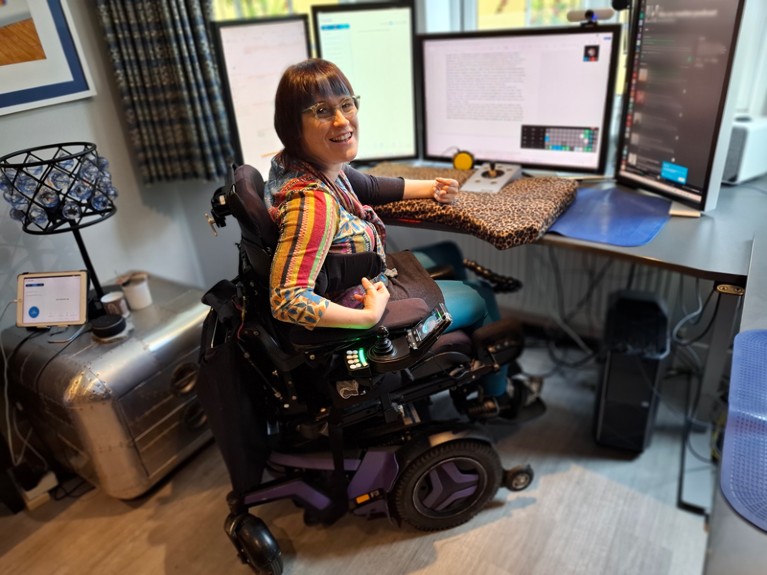
Claire Malone uses AI for dictation.Credit: Claire Malone
That said, GAI can also bring joy to peoples’ lives. Speaking to Nature, scientists shared stories of using the software to create knitting patterns, recipes, poetry and art. That might seem irrelevant to academic research, but creativity is a crucial part of innovation, Mankoff says. “Particularly for creative tasks — ideation, exploration, creating throwaway things as part of the creative process — accessibility tools don’t have all of the capabilities we would want,” she says. “But GAI really opens the door for people with disabilities to engage in this space where interesting advancements happen.”
NatureTech hub
Claire Malone, a physicist turned science communicator based in London, is working on a science-fiction novel and uses AI to transcribe her thoughts through dictation — something she couldn’t do even a year ago. Malone has mobility, dexterity and speech conditions because of cerebral palsy, but in 2022, she discovered an AI tool called Voiceitt that transcribes atypical speech and integrates with ChatGPT. Whereas before she could type at six words per minute, “if I dictate, I can write at the pace that I speak”, she says, adding that the tool has been “transformative” in her work and personal life. In a LinkedIn post (see go.nature.com/3ixrynv), Malone shared how she can now get away from her desk and dictate text whenever inspiration strikes.
As for Kang, she’s started using GAI to re-engage with her creative and social outlets. Before her accident, Kang often wrote fiction and graphic novels, and she has started to do so again using ChatGPT and image generators. She’s also rebuilding her social life by hosting house parties and using ChatGPT to generate conversation topics and even jokes. Using chatbots to inject humour back into her relationships has helped her to reconnect with friends and break the ice with strangers, she says. “Humour feels like such an unimportant thing when you’re trying to rebuild a life, but if you can afford to be funny, it feels like you’ve succeeded.”
[ad_2]
Source Article Link


